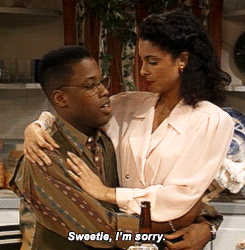How to Heal Stagnant Relationships
Have you ever felt like every interaction in a relationship is haunted by the past?
Image Credit : HBO
When unresolved hurt lingers between you and someone you care about, your bond becomes stuck in a cycle that drains both your energy and your ability to connect authentically.
Breaking free from this emotional guilt is one of the most important steps to healing a relationship or, sometimes, yourself. But it requires honesty, space, and the courage to let go of roles and dynamics that no longer serve either of you.
How Past Hurt Impacts Present Relationships
When you value someone, it’s natural to care about their feelings. However, this care must come from a place of genuine concern—not from guilt or lingering past disagreements.
If your relationship is still operating on unresolved hurt, clarity will always be out of reach. Every conversation becomes tied to past disagreements they haven’t let go of, and instead of connecting in the present, you’re constantly reliving old conflicts.
This dynamic forces you into a position of emotional control. You can’t speak your mind or act freely because their unresolved pain hovers over the relationship, ready to resurface at any moment. You’re stuck in a stagnant role, often as the “villain,” where every word or action is filtered through the lens of their lingering hurt.
Signs You’re Trapped in a Negative Cycle
You feel like you have to walk on eggshells around the person.
Every disagreement leads back to past conflicts.
You can’t fully express yourself without fear of reopening old wounds.
Your relationship feels draining instead of energizing.
When these patterns persist, the relationship becomes less about mutual growth and more about maintaining a fragile truce. To move forward, something must change.
Image Credit: NBC
The Importance of Creating Space
Healing isn’t possible when you’re both stuck in the same loop. Sometimes, the best way to save a relationship—or yourself—is to create space. This isn’t about abandoning the person you care about; it’s about allowing both of you the time and distance needed to heal individually.
Without this space, your bond will continue to run on unresolved hurt. You’ll remain trapped in the roles of victim and villain, unable to see each other clearly. By stepping back, you give both yourself and the other person permission to grow, release the past, and redefine the relationship on healthier terms.
Steps to Break Free from Emotional Guilt
1. Reflect on the Root Cause
Take time to understand what caused the lingering hurt. Acknowledge your role in it, but don’t allow guilt to dictate your actions moving forward.
2. Communicate Respectfully
If possible, have an honest conversation about the need for space. Explain that your intention is to prioritize healing for both parties, not to assign blame.
3. Set Boundaries
Define what kind of distance you need—whether it’s a pause in communication or a shift in how often you interact. Boundaries protect your energy and allow you to focus on your growth.
4. Focus on Self-Healing
Use the time apart to reflect, grow, and rebuild your confidence. Journaling, therapy, or meditation can help you process the emotions tied to the relationship.
5. Be Patient with the Process
Healing takes time. Give yourself and the other person grace as you both navigate this new chapter. The goal isn’t instant resolution but lasting clarity and peace.
Why Breaking the Cycle Isn’t Selfish
It’s easy to feel selfish for stepping away from someone you care about, especially if you feel responsible for their pain. But breaking free from emotional guilt isn’t about abandoning them—it’s about giving both of you the chance to grow.
By releasing the roles of victim and villain, you create space for something new. Whether that means rekindling the relationship on healthier terms or moving forward separately, the outcome will be more authentic and empowering for both of you.
Embrace the Power of Letting Go
Breaking free from the guilt of past conflicts is one of the most healing choices you can make. It allows you to step out of the shadow of past disagreements and into a space of clarity, authenticity, and growth.
When you prioritize your healing, you give your loved ones the freedom to do the same. Letting go isn’t the end of the relationship—it’s the beginning of a new chapter where both of you can truly thrive.

